|
Today we are going to break down a cool ad by Adobe! Now, I happen to love Adobe as a company. I first interacted with their products when I was in high school (back in 2004), which ultimately influenced the career im in today, so… I love you Adobe! THE STORY The Click Baby Click ad was a commercial that ran during Advertising Week in 2013. It was produced by Goodby Silverstien and Partners and the ad was to promote Adobe’s Marketing Cloud, a product that was released in 2012 for digital marketers to get insights on their campaigns. The story was very simple. An encyclopedia company thinks they are killing it with digital advertising so they go all out on printing surplus and then the punchline comes in… it's a baby clicking. Boom. The video ends with, “Do you know what your marketing is doing? We can help.” The message was clear. Without true insights into your campaign, you will make rookie mistakes. So, use Adobe. This ad prompted many more in Adobe’s suite of “Do you know what your marketing is doing?” campaign, other stories included The Psychologist, Are You on WooWoo, The Launch,The Gambler and Mean Streets, showcasing different scenarios of the dangers of not having proper insights in place and the big mistakes you’ll make as a result. THE IMPACT This was a big deal for Adobe since it was their first TV spot purchased in 10 years! Adobe said the campaign drove a 25% increase to their Marketing Cloud suite. The video also made Adweek’s Ad of the Day- which is nice. There’s not a ton of stats available to glean through on this one, which was a little disappointing but I did manage to comb through the other commercials that spawned as a result of the success of the Click Baby Click commercial and they all have large view counts. In general, B2B case studies won’t compare to their B2C rivals in numbers, but Adobe clearly saw enough value in this genre of commercials that they made a whole bunch more with the same theme. THE TAKEAWAYS Adobe used emotion and humor here to engage their audience. The emotion? Anxiety. What marketer doesn’t feel the anxiety of a campaign running, learning from the results, and then taking actions? By building up that tension, the viewer wants to know the results! I like the build up so that by the time we get to the punchline, we are so thrown off by the humor that we kinda do a double take and chuckle under our breath “Clever… very clever Adobe. Another important element here is that while the scenarios are over the top, they are also very human. They are hyperbolized versions of everyday experiences marketers go through and this is the kind of language B2B advertising should be doing. Relatable human experiences for human buyers. They are selling a scenario that is extremely relatable, showing the viewer that Adobe “gets them.”
Good job Adobe, keep it up.
5 Comments
When you think of a safety PSA, you can imagine a pretty straightforward, boring video. But that’s not how Melbourne Australia's Metro Trains was going to prevent train related accidents. No, they needed to go a diffferent route - and thus “The Many Dumb Ways to Die” campaign broke the mold of how public service annoucements educate audiences. THE STORY The year was 2012, and the conversation at Mcann, Metros ad agency, went something along the lines of “How the hell do people get hit by trains anyway? They travel in a straight line...that’s sooo dumb.” Eureka. It’s dumb to get hit by a train, just as much as it is to play with a bee hive or light your hair on fire. And so they wrote a hilarious jingle accompanied by an oddly funny to watch animated video of little jelly bean shaped characters dying morbid yet entertaining deaths Right off the bat, there were two assets to play with: A video and a song. But Mcann was smarter than that. They also created a bunch of GIFs from the animated video for easy to share “memes” if you will. And so the plan was simple: Leak the video to one trusted journalist, share the GIFs with a bunch of early adopters via Tumbler, and then sit back and watch viral in action. The campaign (video, song, GIFs) was launched and by the time the wekend was over, Dumb Ways to Die was on Reddits front page, the views were coming in, the social media buzz was ablaze and Mcann and Metro said… nothing. No bragging to media, no aggressive response campaign. It was hands off. To the extent that all over the world, people were making parodies, translating the song and more. The video would be viewed by tens of millions of viewers in the first couple weeks of the campaign! This kind of hands off approach is rare and should be applauded The video was so popular worldwide, Metro decided to expand to train station public posters and billboards, a children’s book, and created a mobile game to further push the Dumb Ways to Die message. THE IMPACT Look at these numbers!
But was the campaign effective you ask? Great question! Metro Trains found a 21% reduction in train station incidents. While it is hard to attribute this result directly to the campaign as there are many other factors that contribute to train related accidents, it is a positive statistic that does help argue that the campaign had been effective. Metro did report that they had a goal to get 10,000 “pledges” from Melbourne citizens not to be “dumb” around trains. They received 90 million. I wonder what stats other Metros’ around the globe saw after this campaign - that would be an interesting indicator as well. THE TAKEAWAYS
We have to give props to creativity and authenticity here. Mcann and Metro broke stereotypes of what you can expect from a PSA and dared to be different. Iit paid off. “Don’t be dumb” became a catch phrase that would play a role in railway safety around the world. I like the fact that they let the world judge the video on its own. By not tampering with social media after launch, they allowed their message to stay authentic and true. I think it’s an interesting strategy considering some of the other brands we’ve seen who included community interaction as a staple part of their campaign. I really like their multi-channel and multimedia approach here. Not relying solely on one social media channel but allowing growth through multiple platforms by catering content specific to different platforms. Melbourne's Metro released the video in 2012 and probably never imagined the campaign having such global reach. The fact they successfully transitioned a PSA into a pop culture franchise that now sells plush toys, books and more makes this story so much cooler! Hello Ladies! Today we’re going to talk about Old Spice. The manliest of commercials. THE STORY The year was 2010. Old Spice was losing market share and needed a boost to gain control and increase revenues. Remember, Old Spice was a 75 year old brand. But, with the Axe dominating the scene as well as other grooming brands such as Dove and Nivea entering the men’s line of products, Old Spice needed a way to stand out. They chose to highlight their body wash and the goal was to target both men AND women. A men’s product - that targets female shoppers. And so they turned to award winning ad agency Wieden and Kennedy (the minds behind Just Do It) to blow up the internet with a rockstar ad. “The man your man could smell like” ad featured former NFL star Isaiah Mustafa in what is probably the most all over the place ad, ever. It was insanely popular and birthed a series of Old Spice ads that had a form of continuity from one to the next. All of them, very obscure. One of the coolest parts of this viral ad is that Old Spice had Isaiah responding to Tweets and Facebook messages and the like, giving longevity and personality to the Old Spice brand. The ad put OldSpice back on the map as a top men’s grooming company and a lot of their current success started with that ad. THE IMPACT
THE TAKEAWAYS Besides the creativity of the ad, which is no small feat, the first thing we should notice about the ad is WHO it’s targeting - women! They target women in the ad because over 50% of body wash purchases were done by women. This was a demographic they wanted to include in order to help grab more market share. It worked. But it should force you to ask - who is your real target market? It’s a men’s product - it takes a genius to say, “yes we are targeting men...but who’s going to BUY the product” This is the kind of marketing wizardry that makes history. Old Spices investment into responses was amazing. Responding to questions and comments all over the internet, this made their company a living breathing brand, not just some corporation. Old Spice put in a lot of effort to aggressively respond to comments, to the extent that they created a Facebook profile for the “Old Spice Guy” to respond! They used this strategy to keep the ads alive after they were viewed, by having a film crew, writers, and media scanners going through questions, writing creative responses, filming said responses, and posting those responses via quick to market videos. Obviously you can’t respond like this forever, but the Old Spice marketing crew had an “exit strategy.” They said goodbye in their last video and thus concluded the aggressive response part of the campaign.
Not everyone gets to hire the most famous ad agency for their company - but it doesn’t mean we can’t learn from their success. Today we are going to talk about the most viral video ad of all time. The Dove “Real Beauty Sketches” campaign ad. The identity of the Dove brand has always been “celebrating beauty in its diversity and, in doing so, raising the self-esteem of women and young girls globally.” And since 2004, Dove has been pushing hard on that brand by trying to debate “what is beauty?” This is the driving force behind all their videos. Now, back to the sketch ads. THE STORY For those unfamiliar with the ad - the concept was that an FBI sketch artist would sketch a woman’s description of herself, and then do the same sketch based off the description of the same woman from a stranger. Then, the women would review the sketches side by side and learn how they were more critical of themselves than strangers were regarding their beauty. Such a cool concept. The video was launched in 2013 and has over 114 MILLION views! THE IMPACT Holy moly - This video hit a home run. Let’s take a look at some of the stats:
And yes, sales increased as well. By a ton. But sales wasn’t the only goal here. Dove’s Global VP said, “If Dove Real Beauty Sketches has inspired women to see the beauty in themselves that others do, we consider the campaign a success.” THE TAKEAWAYS Let’s break this video down by it’s elements so we can harvest some of that sweet, sweet inspiration Creativity. By using an FBI artist, you as the viewer automatically ask - what the heck? I must watch more. Emotion. Watching someone react to the experiment leaves you with the chills. It allows you to empathize with the women and leaves you with a burning question of “What is beauty?” Reflection. After watching this video, you were probably asking yourself - Wait...am I self critical of my beauty as well? Now you are part of the experiment. Use of call to action. Dove wanted their audience to stand strong for the “real beauty” message. They asked viewers to share the hashtag #WeAreBeautiful, not only increasing brand awareness, but also achieving campaign success. These 4 elements are crucial for making videos that resonate:
1. Am I being creative? 2. Am I speaking to their emotions? 3. Am I inspiring them to reflect on on our message? 4. Have I asked them to share in our mission? If you use these filters for your next video - I am sure you can achieve success THE STORY McDonald’s is a global brand, known for fast and affordable food. But, that comes with a lot of naysayers. For years, Mcdonalds had to face flack for “unhealthy food” or “not using real ingredients.” Heck someone made an entire documentary focusing on how unhealthy McDonalds food is. So with all the misconceptions and negative tropes on the mean streets, McDonlads said to themselves - Let’s give the people what they want... TRANSPARENCY. The “Our Food, Your Questions” campaign. The campaign actually started out with McDonald's Canada back in 2012, giving people the chance to ask anything to McDonald’s corporate about it’s food. Questions like “What’s in the Big Mac sauce?” or “Are Chicken McNuggets made from pink goop?” They drove traffic to a custom built landing page where consumers submitted their questions, and here’s where it gets awesome. They responded...with video. As a matter of fact, key staff members within the McDonald’s corporation answered questions directly via short and informative “webisodes”. The most popular video features Hope Bagozzi, creative and marketing director, who explains why a hamburger looks different in advertising than when you buy it at the restaurant. The video has over 12 million views! I suggest you watch some of the webisodes, they are very cool and very REAL. THE IMPACT The campaign was a huge success. First of all, McDonald’s Canada was named “Marketer of the Year” in 2013 as a result of the campaign. McDonald’s Australia and US soon thereafter launched their own transparency campaigns too, and saw amazing success. Let’s take a look at some of the numbers. (We’ll focus on the Canada numbers since they were the originators of this campaign.)
But wait, there’s more!
Imitation is the most sincere form of flattery. Wendy’s launched a similar video campaign showing their farm to table story of the lettuce in their salads. THE TAKEAWAYS Why was this campaign so successful? Well, honesty is the best policy. And McDonald’s KILLED IT, in this campaign. By using video, they let their audience in on “trade secrets”, they introduced them to real people in the company and they let their clients feel and experience the answers to their biggest questions. I don’t think this campaign would have been as successful as it was without the use of the webisodes since those videos did more than answer the questions. Another awesome takeaway is that they didn’t start with video, but used it to complement and achieve their overall goal which was to change perceptions. I think other businesses can take that into account when they are planning goals and how to achieve them. If you analyze the funnel here it was: 1. Digital and print ads to get them to website. 2. User inputs questions 3. McDonald’s produces videos BASED off questions. 4. McDonald’s blasts said videos at the same time answers said questions on website. You’d be surprised how often marketers miss this crucial piece of important planning. If you want to have the biggest impact with your video - you need to plan where and when you want your audience to see it and how it helps the overall goal. That’s what funnels are for right? I love this campaign. It’s real, it’s honest and it’s consistent in its delivery. I love how every video opened with an important staff member holding up a tablet with the question. I also love how unique each video was in its style and content. |
Mordy RappCreative Director at VideoSparks ArchivesCategories |
⇣ Drag elements to your Custom Footer Container ⇣
⇣ Drag elements to your Bottom Footer Container ⇣


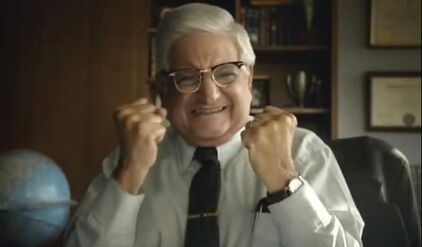

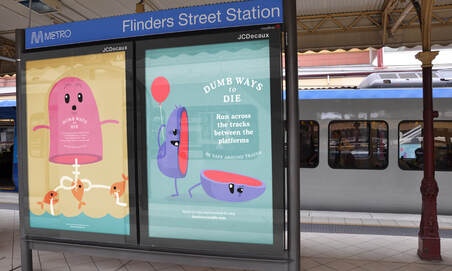


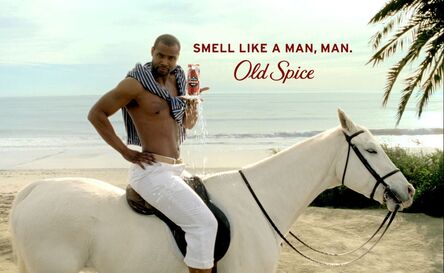
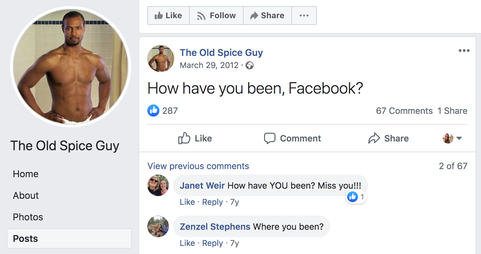
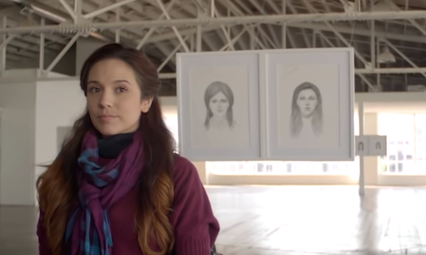
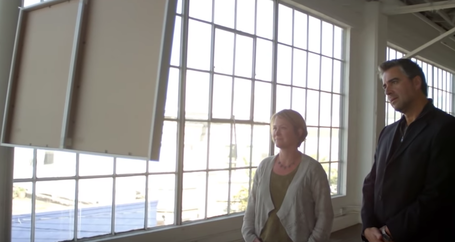
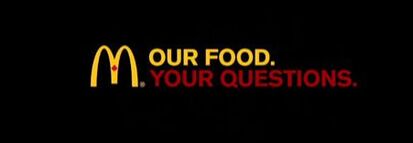
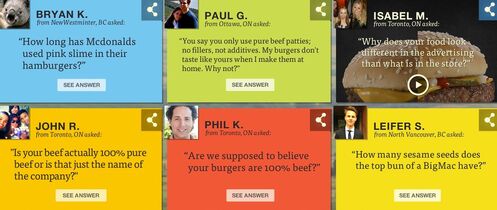
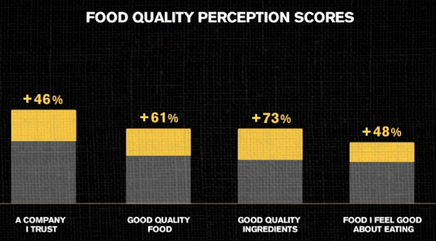
 RSS Feed
RSS Feed